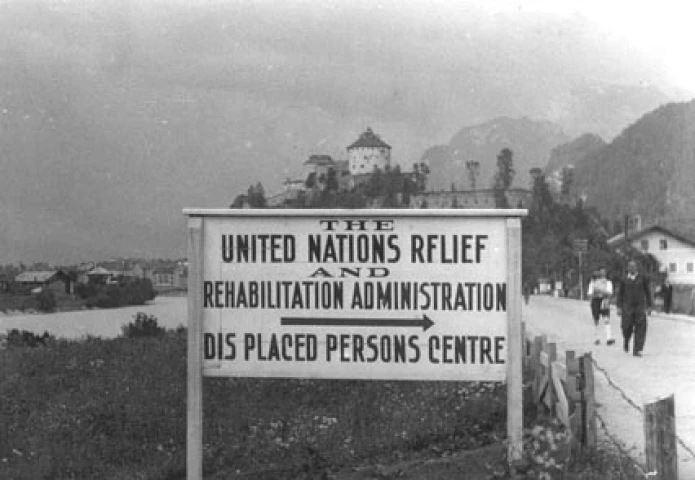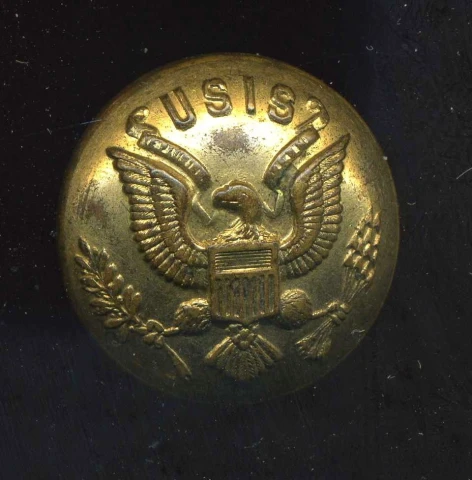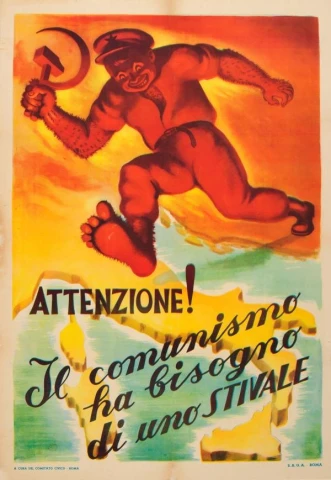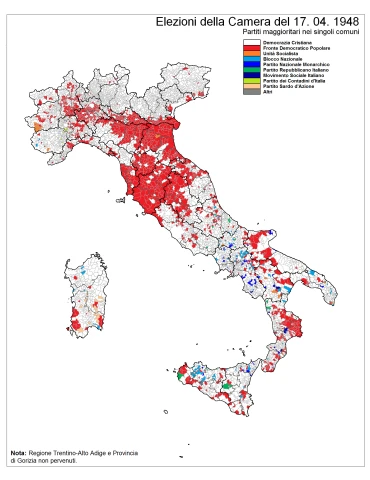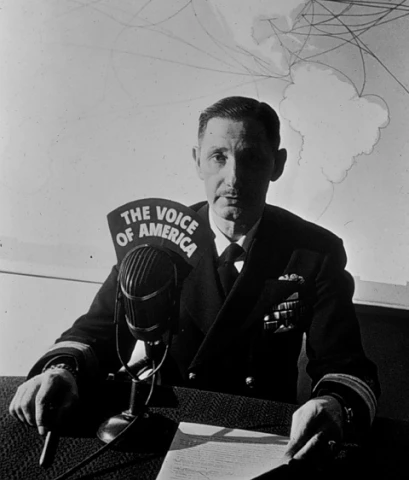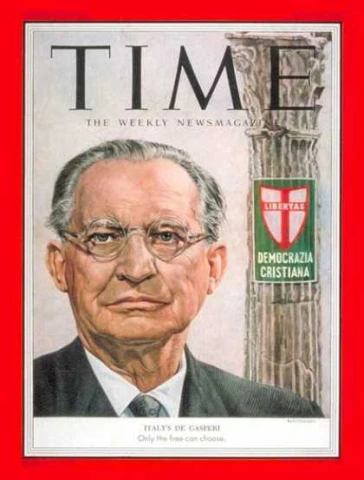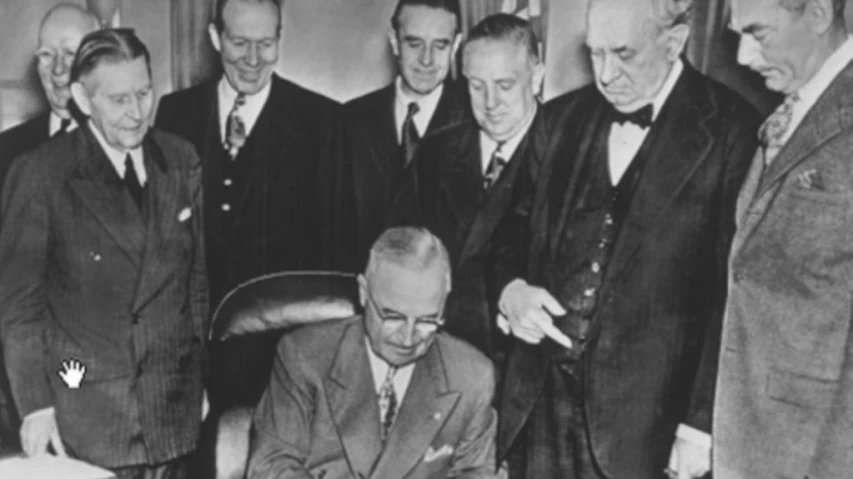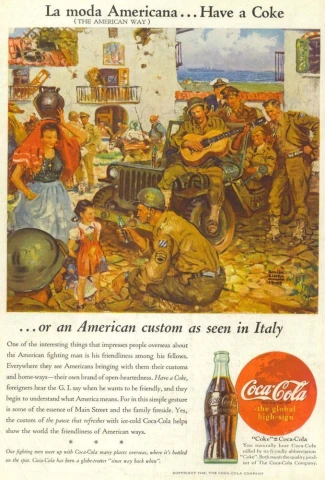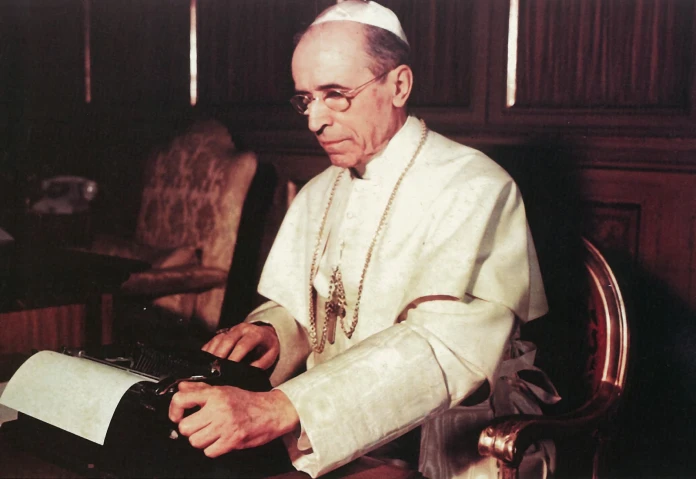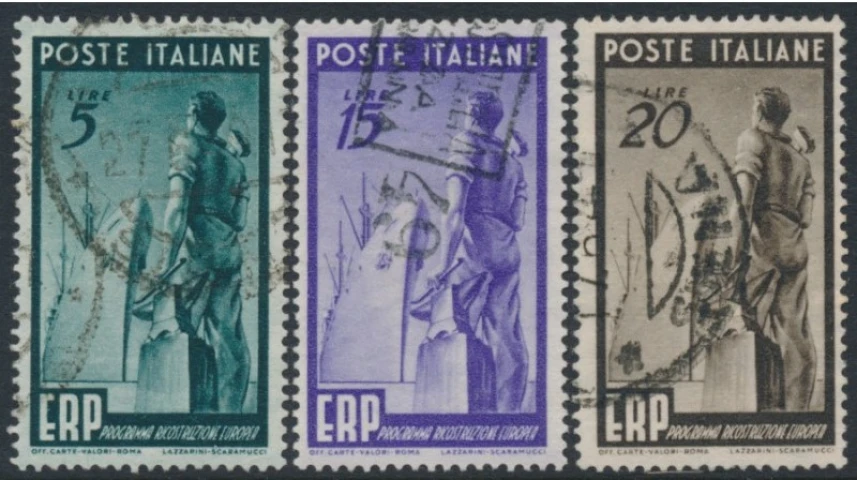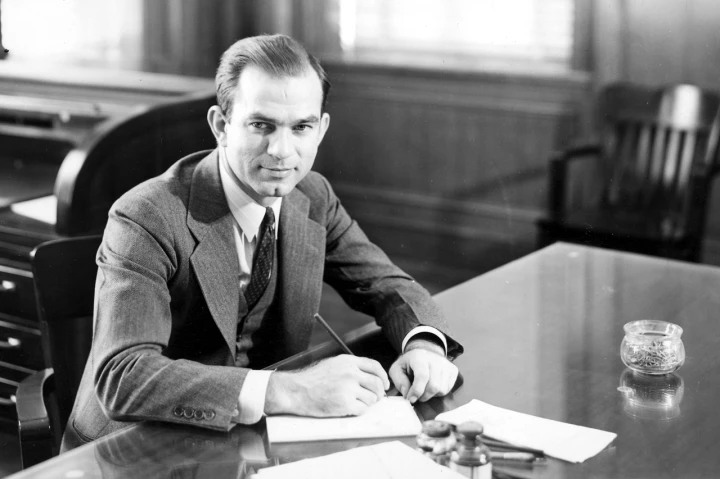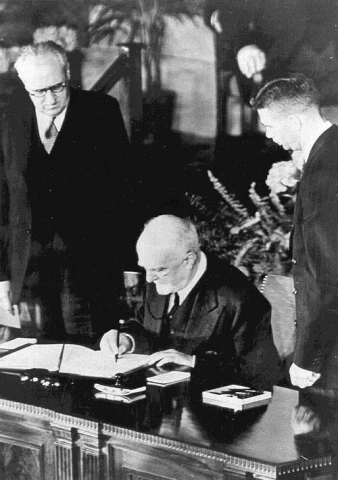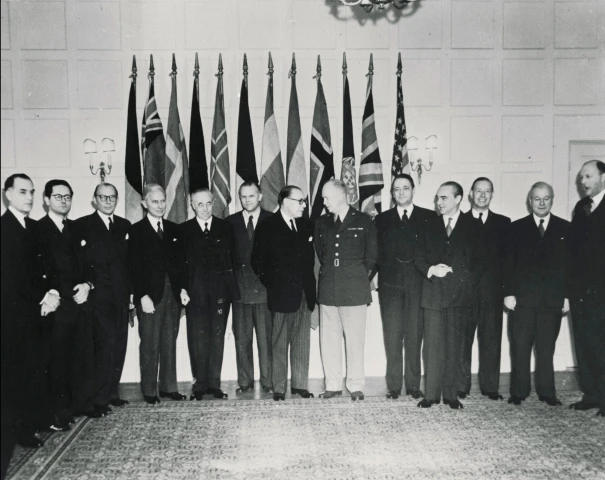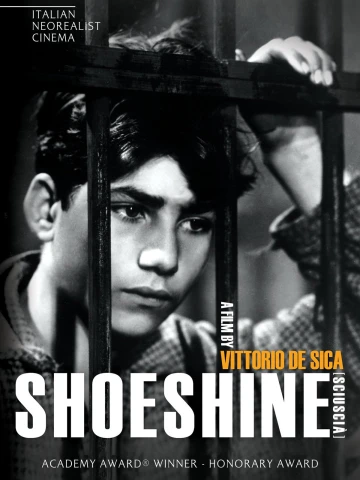Italy and the US experienced a multifaceted relationship from 1943 to 1955. After the war the US played a historic role in assisting Italy with rebuilding and planning its future. Threatening this effort, both within and beyond Italy’s borders, were communism and the Italian Communist Political Party (PCI).
During the rebuilding of Italy the US participated in many aspects of Italians’ daily lives. A great deal of political, military, social, and economic involvement by the US occurred between 1943 and 1955. To be clear from the start, here at We the Italians we have been, are and always will be grateful to the United States for many reasons, and one of these is the subject of this long and interesting interview with Roberto Ferragina, a business consultant in the New York metropolitan region, who wrote his Master's thesis in History on this subject.
Roberto, once the war was over how did the US assist Italians above and beyond the assistance from other nations?
First we must look at the condition of Italy after the war. Approximately 400,000 soldiers, sailors, and airmen lost their lives. Approximately 1.2 million homes were destroyed, mostly in cities of 50,000 or more people. Many Italians were also faced with inadequate food supplies.
Germany had forcibly removed hundreds of thousands of Italians and transported them to Germany as foreign workers. After the war it was primarily the US Army, along with the assistance of allied armies, who managed these displaced Italians: they were provided necessities and handed over to the United Nations Relief and Rehabilitation Administration (UNRRA), an agency founded in Washington DC in 1943. The agency spent 10 billion dollars between 1945 and 1947 for postwar needs and emergencies. By September of 1945, 700,000 Italians had been liberated, cared for, repatriated, and provided some assistance by the UNRRA.
Assistance in aiding the recovery of Italy had begun during President Roosevelt’s administration. For example, Roosevelt introduced an Italian credit system to cover Amlire, American Lire currency, spent by American troops. Assistance continued under President Truman who endorsed the progression of funds for the Italian recovery. Truman recognized the strength and size of the PCI and its supporters. In order to block this communist threat from growing within Italy, Truman supported programs to assist the Italian nation, its people, and the Christian Democratic Political Party (DC).
In addition, at the Potsdam Conference, President Truman pushed for Italy’s entry into the United Nations. Russia was not presenting any aid packages for Italy. The Soviets did not see any real interests in strongly aligning themselves with a war-torn Italy. They did not share a common boundary with Italy, and allied troops, predominantly US and British, were still on Italian soil. After all, Italy was situated in a geographic position well suited for the Allies.
The Truman Doctrine, announced in March of 1947, provided military and economic aid to several nations. Regarding Italy, the doctrine provided assistance in pursuit of anti-communist containment. The Truman Doctrine was well received and supported throughout Italy: some estimates indicate roughly 60 percent of Italians supported it.
If Russia was not actively and fully engaged with postwar Italy why would there be a communist threat?
The Italian Communist Party (PCI) was the largest communist party in western Europe, immediately following the war. Although the PCI network had been established, Moscow did not appear ready or willing to interfere in Italian affairs. Italy was too deeply entrenched ideologically and geographically within western Europe. There was also the financial burden of reconstruction and the political unrest within Italy as well as the relationship between the US and the Italian people which had existed prior to the Second World War through immigration and commerce.
How did the US influence the Italian postwar elections?
After the US had committed so much in dollars and lives to defeat Fascism, it was not going to lose the peace to a communist Italy. The information to assist in educating Italians regarding democracy was financed by the United States Information Services (USIS) Coordinating Committee. Numerous booklets were distributed freely in the Italian language. The booklet topics included “elections in the US, how the US Government works, the Constitution and other fundamental US documents.” Various other departments of the US Information Service would assist in this effort: the Book Division, the Radio and Motion Picture Divisions, the News and Features Division, and the Special Projects Division complied with the same objective.
The US had advocated and encouraged the Italian people to establish a free government of their own, and was pleased when the monarchy was discredited and eventually abolished in 1946 by a popular referendum. On February 11th, 1946, four months prior to elections, the US State Department issued a statement encouraging Italian voters to participate in their Constituent Assembly elections. In that statement Italy was reminded of the pledge the US made prior to the landing of American soldiers on Italian soil to rid Italy of Fascism, Nazi oppression, and to establish a free Government.
Elections were held on June 2nd and 3rd, 1946 in relative peace. They represented the first free elections the Italian people participated in twenty-five years. They also represented the first free elections for Italian women, ever. Over 20,000,000 Italians voted, in long lines, for hours and in the heat of the summer. The overall victory for the Republic over the Monarchy was made by a narrow margin, 12.7 million votes in favor of the abolition while 10.7 million voted in favor of retaining the Monarchy.
The threat of communist victory in Italy was real, especially after the elections of 1946. For example, the PCI secured 4,350,000 votes, 19% of the vote. As far as raw numbers were concerned, Communists and Socialists within Italy held a large portion of the overall population. By 1947 the PCI had grown to approximately two and a quarter million, a number which greatly concerned the US.
The task of the US was to demonstrate why it was in the Italians’ best interest to support the DC. American officials feared a communist ruling coalition resulting in the 1948 national elections. It was apparent that the DC was the party most closely aligned to the political and economic principles of the US. These elections were critical in a world where two spheres of influence existed, the USSR and the USA. The objective for the US was to solidify the Italian system within the North Atlantic Alliance, into the Western camp.
Specifically how did the US sway Italians into voting for the D.C.?
In order to counter the spread of communism in Italy the US assisted the DC with financial donations, advertising, promoting its beliefs, and in registering Italians to vote. In fact, the Central Intelligence Agency (CIA) assisted in disbursing money to non-communist campaigns, especially the moderates. The money was used in print campaigns, radio, theatre, posters, pamphlets, and more. The US promoted its core values and principles heavily. The Christian Democrats and Socialists alone received approximately one million dollars from the CIA.
The Office of War Information (OWI) had engaged in this activity until it was abolished in 1945. Although the OWI was originally set up to assist American soldiers and Allies in the fight against the Axis powers, toward the end of the war its attention was shifted to creating a pro American environment and impression of the US in Europe.
This shift was also true for the Voice of America (VOA). Many of Italy’s citizens enjoyed American entertainers, especially entertainers of Italian heritage. VOA was a radio broadcast network of the US government which assisted these entertainers in reaching out with a message to their fans. The VOA appealed to Italians knowing they were direct targets for communist sympathizers. The VOA would, for example, broadcast messages from Hollywood elites such as Frank Sinatra. The VOA would also broadcast letters from Italian Americans warning of the dangers of communism.
The VOA also established programs to inform Europeans of the wealth and productivity which could be found in the US. The overall purpose of the VOA and the OWI in postwar Europe was to help Europeans better understand and value the American way of life. In the end these efforts proved beneficial to the anti-communist cause as the Christian Democrats were ultimately elected in Italy.
For the average American it had appeared that Western democracy had been victorious in the Italian elections of 1948, and it had. The US valued Italy’s Prime Minister Alcide De Gasperi’s anti-Fascist past and dedication to the liberal Christian Democratic tradition.
In 1947 the US Government invited De Gasperi to discuss economic concerns as well as questions regarding the peace treaty. On January 3rd of that year, three days prior to his meeting in Washington, De Gasperi told a New York Times reporter, the meeting “means that we have a friend [with the US].” De Gasperi met with President Truman and received assurances of assistance.
What other forms of government assistance or legislation did the US provide for Italy?
The US enacted the Smith-Mundt Act in January of 1948. The act authorized the use of magazines, films, embassy libraries, government-sponsored lectures, and the Voice of America to promote America’s foreign policy.
Another tool which the US utilized to promote its domestic institutions and global ambitions to Italians was the US Information Agency (USIA). This agency, proposed by the Eisenhower administration and launched in 1953 as an additional weapon against communism, administered the “embassy libraries, cultural centers, and American Houses” as well as supervised “book translations, exhibits, and English-language courses.”
Which forms of the American culture were exported to spread democracy and fight communism in Italy?
By the late 1950s and early 1960s various forms of American culture were exported to many Italian and European cities, to demonstrate American culture firsthand to the people. For example, orchestras and soloists from American cities performed concerts while American baseball teams traveled through Italian cities. Other examples included art exhibits, American dance and ballet, and photographic collections.
American GIs stationed in Italy were cultural ambassadors as well. They used their “r and r” (rest and recreation) at dance halls and night clubs, and exposed Italians to American forms of dancing and popular music. Swing dancing and be-bop, in particular, gained popularity and had widespread radio play across the country.
What role did the Vatican play in the effort to combat communism in postwar Italy?
The Vatican played a critical role in assisting both the spread of democracy in Italy and the US led struggle against communism. Pope Pius XII was seen by many Italians as a courageous man for remaining in Rome during the war while Rome was under Nazi control. Many in Italy were worried about the possibility of an Italian nation under communist control in which the Vatican would be under the influence of the PCI or even worse, Moscow. The US government was also concerned about this, kept close relations with the Vatican after the conflict, and was extremely pleased when the Vatican spoke out against communism and in favor of democracy. In fact, during the crucial election of 1948 the Vatican made every effort to assist the Christian Democrats in defeating the communists.
Please describe the importance of the Marshall Plan relative to rebuilding Italy and promoting postwar democracy.
The Marshall Plan was presented by the US, officially by Secretary of State George C. Marshall, in 1947. The 20 billion dollar relief plan was enacted in the spring of 1948. By the end of the war the US had spent billions in grants and loans to European nations: those to Italy exceeded $513 million dollars by mid-1947. Most of the loans were allocated and utilized for emergencies and essential needs. Most European nations knew it would be very difficult to repay the loans.
The US knew it had to develop a plan which would result in the rebuilding of Europe’s infrastructure and prevent western Europe from falling into the hands of the communists.
The Marshall Plan elevated Italy’s status, wealth, and stature in the world. It assisted Italy in aspiring to be one of the most advanced nations on the globe. Italy announced on June 1947 that it had reviewed and approved the Marshall Plan. Italy had serious domestic problems at the time. On one occasion, for example, several requests were made at a 2,000 person Columbus Day dinner held at New York’s Waldorf-Astoria Hotel. That event, held in October, included Ambassador Alberto Tarchiani, who described the “dark winter” ahead and discussed Italy’s monetary problems as well as the short wheat crop.
As Marshall Plan aid reached Europe in 1948 the Italian government utilized it in various ways. In the first year, for example, funds were allocated for struggling industries as well as the import of grain and coal, both of which were in great demand. Italy then requested a large portion of the aid for investment in national sectors of its economy which it deemed essential. These included engineering, agriculture, transportation networks, and energy.
A critical goal of the Marshall Plan was to counter the spread of communism. In Italy, the way to achieve this was to raise Italy’s standard of living, thereby enhancing the popularity of the DC. In essence, it was difficult to promote communism in Italy with massive aid arriving from the US while at the same time the Soviet Union refused to allow its satellite nation states to participate in the plan altogether.
How did the American business sector affect Postwar Italy in combatting communist?
The American managerial and business models were regarded among many Italians as the most successful and profitable in the world. The Americans were happy and willing to share them; after all, this produced additional business and profits for US firms.
Growth and prosperity did result in part to Italians adopting American business practices during postwar recovery. The results, while mixed when reviewing managerial philosophies, were impressive when one looks at economic growth. For example, in the decade from 1950 to 1960 the Italian economy had grown at a rate of approximately six percent per year. This was one and a half percent greater than the western European average. During this same time Italy’s imports more than doubled and its global exports nearly trebled.
As northern Italy progressed during the postwar years, how did the US deal with southern Italy?
The severity of Italy’s southern unemployment situation was one in which northern Italy could not handle alone. As the north was progressing forward the south lacked the factories, the wealth, and the infrastructure which the north had. In addition, the mafia’s influence was entrenched in the south. This combined with massive unemployment and a significant illiteracy rate created a breeding ground for communist sympathizers.
In order to combat the overpopulation and unemployment of southern Italy the US focused on a plan of emigration. Most of the Italian emigrants relocated to Argentina or the US. By doing so some of southern Italy’s economic constraints were alleviated, thus decreasing the threat of communist sympathizers feeding on the poor, unemployed, and helpless.
Did the US implement any educational programs during the postwar years in Italy?
Yes. There was one American program in particular which affected the European educational system with tremendous results: the Fulbright Program. The program was enacted by President Truman and his State Department. It was basically an academic exchange program which issued scholarships. Written by, named after, and proposed by Congressman, and later Senator, J. William Fulbright in 1945, the program was officially enacted in August of 1946.
By the end of the 1940s Italy had Fulbright programs in place: they allowed the academically inclined within Italy to explore and be informed about the American system. It also assisted in stimulating the intellectual minds of America’s allies.
An effect of American programs, both governmental as well as academic, resulted in the increase of the use and demand for the English language. As Italians experienced American films, American products, and American tourists in their country, the curiosity and necessity to learn and speak English rapidly grew. By the 1950s, studying the English language was often required by most schools.
During postwar Italy, how did the US affect or influence the military stability of the Italian armed forces and protect the Italian peninsula?
Specifically, the North Atlantic Treaty Organization (NATO) affected the military stability of Italy while maintaining the strength of the US and its capitalistic principles. Set in place in 1949, NATO was basically a military shield protecting all member nations. Italy had sought out membership in NATO principally under the leadership of the DC leader De Gasperi who knew that as the world divided into two spheres of influence entry into NATO would protect Italy militarily.
As a member of NATO Italy was basically affiliated with the foreign policy of the US. This meant billions of US dollars invested in building and maintaining NATO military installations on the Italian peninsula with thousands of US soldiers stationed at the bases.
Fiat, the Italian automotive manufacturer in Torino, received American contracts for ground-support jet aircrafts. The contract was not only beneficial to Fiat, the local Torino economy, and Italy, but also to the US. NATO military installations also affected the Italian people with an increased feeling of safety. The bases also protected the Vatican, thus the world’s capital for Catholicism.
What influence did Hollywood have on the Italian populace and culture in postwar Italy?
After the Second World War, Hollywood remained the most powerful movie producing entity in the world. The Truman administration used the Marshall Plan as leverage regarding Hollywood and the exportation of movies. His administration made it known that if a country accepted money under the plan they should be willing to import an abundance of American movies. Demand for American films in Italy was strong and as soon as the war ended American films performed very well. In 1946 alone, 87 percent of box-office receipts in Italy resulted primarily from American films.
The influence Hollywood had on the Italian society cannot be emphasized enough. Of all European nations after the war, Italy was Hollywood’s number one market, excluding Britain, for exporting films. Approximately six hundred American movies were exported per year to Italy between 1945 and 1949. By 1951 American films occupied sixty five percent of Italy’s screen time.
Through Hollywood films, Italians were exposed to American subconscious branding on the screen. They saw heroes, villains, and icons wearing blue jeans, smoking Marlboro cigarettes and drinking Coca Cola on the screen. There were overall images of grandeur such as large Cadillacs and impressive homes with wraparound porches. All of these things left an impression and impact on Italians that America and Americans were special, modern, full of opportunity, and open to risk. Even on the Via Veneto in Rome American newspapers and magazines were for sale, featuring ads and images of American products.
The Hollywood factor assisted in combating communism, both directly and indirectly. The US government used Hollywood films as a medium to “advertise” democracy during the 1948 elections. Even though Italy had a strong communist party, many of its members openly and happily watched Hollywood films. The truth of the matter was that communism could not compete with Hollywood in Italy.
Hollywood’s strength lured some of Italy’s most talented actors to the US. Even as Italy’s film industry reemerged in the late 1940s several Italian leading actors, such as Alida Valli, Valentina Cortese and Rossano Brazzi, could not resist the call from Hollywood. However, this did not prevent Italy from producing quality films during that period.
How do you respond to those who believe the US aggressively interfered with the Italian political system during the postwar years?
Well, the Christian Democrats earned the support and confidence of many Italians in part because of American direct interference and assistance. While some individuals focus on this and attack the US for interfering in a democratic process, one needs to be reminded that the communists also interfered in the Italian elections. The Cominform did contribute to the elections as well and a communist victory would have altered the nation and the European landscape as well as the entire global picture in the Cold War. Italy, after all, was the gateway to the Mediterranean, a vital military post protecting Mediterranean oil, and the home to the Vatican. With such enormous elements at stake, it was the US which shouldered the majority of the responsibility and financial burden of rebuilding and protecting Italy.
The nation and people of Italy, while enjoying the investments of the US, went from German influence and occupation in their nation to Allied intervention to then immense US investments and political involvement. Because of this, national pride, solidarity, and a general feeling of sovereignty diminished among the Italian people. They had lost so much and had ceded all decisions to a dictator, then a German occupier, and then were exposed to the “American way” of doing things. However, the overall picture from 1943 to 1955 is one of economic improvement and financial investment in the Italian infrastructure, ports, military, and academia. Italy was transformed from a monarchy to a democratic republic. This democratic republic, the nation of Italy, was and is free from communist rule primarily to the credit of the US.
L'Italia e gli Stati Uniti hanno vissuto un rapporto sfaccettato dal 1943 al 1955. Dopo la guerra gli Stati Uniti giocarono un ruolo storico nell'aiutare l'Italia a ricostruire e pianificare il suo futuro. A minacciare questo sforzo, sia all'interno che all'esterno dei confini italiani, furono il comunismo e il Partito Politico Comunista Italiano (PCI).
Durante la ricostruzione dell'Italia, gli Stati Uniti parteciparono a molti aspetti della vita quotidiana degli italiani. Moltissimo coinvolgimento politico, militare, sociale ed economico da parte degli Stati Uniti avvenne tra il 1943 e il 1955. Per essere chiari da subito, noi di We the Italians siamo stati, siamo e sempre saremo grati agli stati Uniti per molti motivi e uno di questi è proprio quanto oggetto di questa lunga e interessantissima intervista con Roberto Ferragina, consulente aziendale nella regione della metropolitana di New York, che su questo argomento ha scritto la tesi del suo Master in Storia.
Roberto, partiamo dalla fine della guerra. Gli Stati Uniti aiutarono l’Italia più di quanto fecero con altri Paesi…
Per prima cosa dobbiamo considerare la condizione dell'Italia dopo la guerra. Circa 400.000 soldati, marinai e aviatori avevano perso la vita. Circa 1 milione e duecentomila case erano state distrutte, per lo più in città di 50.000 o più abitanti. Molti italiani si ritrovarono con poco cibo, quado ne avevano.
La Germania aveva deportato centinaia di migliaia di italiani come lavoratori stranieri. Dopo la guerra fu soprattutto l'esercito americano, insieme all'assistenza degli eserciti alleati, a gestire questi sfollati italiani di ritorno nel loro Paese: furono forniti loro beni di prima necessità e presi in carico dalla United Nations Relief and Rehabilitation Administration (UNRRA), un'agenzia fondata a Washington DC nel 1943. L'agenzia spese 10 miliardi di dollari tra il 1945 e il 1947 per i bisogni e le emergenze del dopoguerra. Nel settembre del 1945, 700.000 italiani furono liberati, rimpatriati e assistiti dall'UNRRA.
L'assistenza per il recupero dell'Italia era iniziata durante l'amministrazione del Presidente Roosevelt. Ad esempio, Roosevelt introdusse un sistema di credito italiano per coprire Amlire, la moneta in lire americane, spesa dalle truppe americane.
L'assistenza proseguì poi sotto il Presidente Truman, che sostenne l’aumento dei fondi per la ripresa italiana. Truman conosceva la forza e le dimensioni del PCI e dei suoi sostenitori. Al fine di bloccare la crescita di questa minaccia comunista all'interno dell'Italia, Truman sostenne programmi per assistere la l’Italia, il suo popolo e la Democrazia Cristiana (DC).
Inoltre, alla Conferenza di Potsdam, Truman spinse per l'ingresso dell'Italia nelle Nazioni Unite. La Russia aveva presentato alcun pacchetto di aiuti per l'Italia. I sovietici non vedevano alcun interesse reale ad allinearsi con forza ad un'Italia dilaniata dalla guerra. Non condividevano un confine comune con l'Italia, e le truppe alleate, prevalentemente statunitensi e britanniche, si trovano ancora sul suolo italiano. Dopo tutto, l'Italia era situata in una posizione geografica adatta agli Alleati.
La dottrina Truman, annunciata nel marzo del 1947, fornì aiuti militari ed economici a diverse nazioni. Per quanto riguarda l'Italia, la dottrina diede assistenza nella ricerca di un contenimento anticomunista. La dottrina Truman fu ben accolta e sostenuta in tutta Italia: alcune stime indicano che circa il 60% degli italiani la sostenevano.
Se la Russia non era attivamente e pienamente impegnata con l'Italia del dopoguerra, perché si percepiva comunque una minaccia comunista?
Il PCI era il più grande partito comunista dell'Europa occidentale, subito dopo la guerra. Sebbene la rete del PCI fosse molto radicata sul territorio, Mosca non sembrava pronta o disposta a interferire negli affari italiani. L'Italia era troppo profondamente legata ideologicamente e geograficamente all'Europa occidentale. C'era anche l'onere finanziario della ricostruzione e i disordini politici all'interno dell'Italia, nonché il rapporto tra gli Stati Uniti e il popolo italiano che esisteva prima della seconda guerra mondiale attraverso l'immigrazione e il commercio.
In che modo gli Stati Uniti influenzarono le elezioni italiane del dopoguerra?
Dopo che gli Stati Uniti si erano impegnati così tanto con dollari e vite dei propri soldati per sconfiggere il fascismo, non volevano certo lasciare l’Italia in mani comuniste. Le informazioni per aiutare a educare gli italiani alla democrazia furono finanziate dal United States Information Services (USIS) Coordinating Committee (Comitato di Coordinamento dei Servizi di Informazione degli Stati Uniti). Numerosi opuscoli in lingua italiana furono distribuiti gratuitamente. I temi dell'opuscolo includevano "le elezioni negli Stati Uniti, come funziona il governo degli Stati Uniti, la Costituzione e altri documenti fondamentali degli Stati Uniti". Diversi altri dipartimenti del Servizio informazioni degli Stati Uniti avrebbero contribuito a questo sforzo: la Divisione Libri, la Divisione Radio e Cinema, la Divisione News e la Divisione Progetti Speciali.
Gli Stati Uniti avevano sostenuto e incoraggiato il popolo italiano a stabilire un governo libero e si rallegrarono quando la monarchia fu screditata e infine abolita nel 1946 da un referendum popolare. L'11 febbraio 1946, quattro mesi prima delle elezioni, il Dipartimento di Stato americano rilasciò una dichiarazione che incoraggiava gli elettori italiani a partecipare alle elezioni dell'Assemblea Costituente. In quella dichiarazione si ricordava all'Italia la promessa fatta dagli Stati Uniti prima dello sbarco dei soldati americani sul suolo italiano di liberare l'Italia dal fascismo, dall'oppressione nazista e di istituire un governo libero.
Le elezioni si svolsero il 2 e 3 giugno 1946 in relativa pace. Furono le prime elezioni libere a cui il popolo italiano partecipò in venticinque anni. Fu anche la prima volta in cui votarono le donne italiane. Oltre 20 milioni di italiani votarono, in lunghe file, per ore e nel caldo dell'estate. La vittoria complessiva della Repubblica sulla Monarchia ebbe un margine ristretto, 12,7 milioni di voti a favore dell'abolizione mentre 10,7 milioni votarono a favore del mantenimento della Monarchia.
La minaccia di vittoria comunista in Italia era reale, soprattutto dopo le elezioni del 1946. Ad esempio, il PCI ottenne 4.350.000 voti, il 19%. Per quanto riguarda i numeri grezzi, i comunisti e i socialisti in Italia avevano consenso in una larga parte della popolazione complessiva. Nel 1947 il PCI era cresciuto a circa due milioni e duecentocinquantamila iscritti, un numero che preoccupava molto gli Stati Uniti.
Il compito degli Stati Uniti era quello di dimostrare che fosse nell'interesse degli italiani sostenere la DC. I funzionari americani temevano una coalizione di governo comunista che avrebbe avuto successo alle elezioni nazionali del 1948. Era evidente che la DC era il partito più vicino ai principi politici ed economici degli Stati Uniti. Queste elezioni furono critiche in un mondo in cui esistevano due sfere d'influenza, l'URSS e gli Stati Uniti. L'obiettivo degli Stati Uniti era quello di consolidare il sistema italiano nell'ambito dell'Alleanza del Nord Atlantico, nel campo occidentale.
In particolare, come fecero gli USA a convincere gli italiani a votare per la DC?
Per contrastare la diffusione del comunismo in Italia, gli Stati Uniti aiutarono la DC con donazioni finanziarie, pubblicità, promozione dei suoi valori e registrazione degli italiani al voto. Infatti, la Central Intelligence Agency (CIA) si produsse nell'erogazione di denaro a campagne non comuniste, specialmente ai moderati. Il denaro fu utilizzato per campagne stampa, radio, teatro, manifesti, opuscoli e altro ancora. Gli Stati Uniti promossero fortemente i loro valori e principi fondamentali. Solo i cristiano-democratici e i socialisti ricevettero circa un milione di dollari dalla CIA.
L'Office of War Information (OWI) si era impegnato in questa attività fino alla sua abolizione nel 1945. Anche se l'OWI fu originariamente istituito per assistere i soldati americani e gli alleati nella lotta contro le potenze dell'Asse, verso la fine della guerra la sua attenzione si spostò verso la creazione di un ambiente pro americano e la valorizzazione dell’immagine degli Stati Uniti in Europa.
Questo cambiamento occorse anche alla Voice of America (VOA). Molti cittadini italiani amavano gli intrattenitori americani, soprattutto quelli di origine italiana. La VOA era una rete radiofonica del governo degli Stati Uniti che aiutava questi intrattenitori a raggiungere i loro fan con un messaggio. La VOA si rivolgeva agli italiani sapendo di essere il bersaglio diretto dei simpatizzanti comunisti. La VOA, ad esempio, trasmetteva messaggi di star di Hollywood come Frank Sinatra, e anche lettere da parte degli italoamericani che mettevano in guardia dai pericoli del comunismo.
Inoltre la VOA diede vita a programmi per informare gli europei sulla ricchezza e la produttività che si potevano trovare negli Stati Uniti. Lo scopo generale del VOA e dell'OWI nell'Europa del dopoguerra era quello di aiutare gli europei a comprendere e valorizzare meglio lo stile di vita americano. Alla fine questi sforzi si rivelarono vantaggiosi per la causa anticomunista, poiché i democratici cristiani vinsero le elezioni.
All'americano medio era sembrato che la democrazia occidentale avesse vinto le elezioni italiane del 1948, e così era stato. Gli Stati Uniti apprezzarono il passato antifascista del primo ministro italiano Alcide De Gasperi e la dedizione alla tradizione liberaldemocratica cristiana.
Nel 1947 il governo degli Stati Uniti invitò De Gasperi a discutere le preoccupazioni economiche e le questioni relative al trattato di pace. Il 3 gennaio dello stesso anno, tre giorni prima del suo incontro a Washington, De Gasperi disse ad un giornalista del New York Times, che l'incontro "significa che abbiamo un amico [gli Stati Uniti]". De Gasperi incontrò il presidente Truman e ricevette garanzie di assistenza.
Quali altre forme di assistenza governativa o di legislazione gli Stati Uniti misero in atto per l'Italia?
Nel gennaio del 1948 gli Stati Uniti promulgarono lo Smith-Mundt Act, che autorizzava l'uso di riviste e film, e delle biblioteche delle ambasciate per conferenze sponsorizzate dal governo e dalla Voice of America al fine di promuovere la politica estera americana.
Un altro strumento che gli Stati Uniti utilizzarono per promuovere le istituzioni nazionali e le ambizioni globali degli italiani fu la US Information Agency (USIA). Questa agenzia, proposta dall'amministrazione Eisenhower e lanciata nel 1953 come arma aggiuntiva contro il comunismo, amministrava le "biblioteche delle ambasciate, centri culturali e case americane", oltre a supervisionare "traduzioni di libri, mostre e corsi di lingua inglese".
Quali forme di cultura americana furono esportate per diffondere la democrazia e combattere il comunismo in Italia?
Alla fine degli anni '50 e all'inizio degli anni '60 varie forme di cultura americana furono esportate in molte città italiane ed europee, per dimostrare in prima persona la cultura americana. Ad esempio, orchestre e solisti americani eseguivano concerti mentre le squadre di baseball americane viaggiavano per le città italiane. Altri esempi includono mostre d'arte, danza e balletto e collezioni fotografiche.
Anche i soldati americani di stanza erano ambasciatori culturali, usando i loro momenti di "r & r" (riposo e ricreazione) nelle sale da ballo e nei locali notturni, ed abituando gli italiani a forme americane di danza e musica popolare. In particolare, la danza swing e il be-bop guadagnarono molta popolarità ed ebbero ampia diffusione radiofonica in tutto il paese.
Che ruolo ebbe il Vaticano nello sforzo di combattere il comunismo nell'Italia del dopoguerra?
Il Vaticano svolse un ruolo critico nell'assistere sia la diffusione della democrazia in Italia che la lotta contro il comunismo condotta dagli Stati Uniti. Papa Pio XII era visto da molti italiani come un uomo coraggioso per essere rimasto a Roma durante la guerra, mentre Roma era sotto il controllo nazista. Molti in Italia erano preoccupati per la possibilità di una nazione italiana sotto il controllo comunista in cui il Vaticano sarebbe stato sotto l'influenza del PCI o peggio ancora di Mosca. Anche il governo degli Stati Uniti era preoccupato per questo, e aveva mantenuto stretti rapporti con il Vaticano dopo il conflitto, rimanendo estremamente soddisfatto quando il Vaticano si dichiarò contro il comunismo e a favore della democrazia. Infatti, durante la cruciale elezione del 1948, il Vaticano fece ogni sforzo per aiutare i democristiani a sconfiggere i comunisti.
Ci puoi descrivere l'importanza del Piano Marshall per la ricostruzione dell'Italia e la promozione della democrazia?
Il Piano Marshall fu presentato dagli Stati Uniti dal Segretario di Stato George C. Marshall, nel 1947. Il piano di soccorso da 20 miliardi di dollari fu varato nella primavera del 1948. Alla fine della guerra gli Stati Uniti avevano speso miliardi di dollari in sovvenzioni e prestiti alle nazioni europee: a metà del 1947 quelli all'Italia superavano i 513 milioni di dollari. La maggior parte dei prestiti furono stati stanziati e utilizzati per le emergenze e i bisogni essenziali. La maggior parte delle nazioni europee sapeva che sarebbe stato molto difficile rimborsare i prestiti.
Gli Stati Uniti sapevano di dover sviluppare un piano che portasse alla ricostruzione delle infrastrutture europee e impedisse che l'Europa occidentale cadesse nelle mani dei comunisti.
Il Piano Marshall aiutò ad elevare lo status, la ricchezza e la statura dell'Italia nel mondo, e ad aspirare ad essere una delle nazioni più avanzate del pianeta. L'Italia annunciò nel giugno 1947 di aver rivisto e approvato il Piano Marshall. L'Italia aveva gravi problemi interni all'epoca. In un'occasione, per esempio, diverse richieste furono fatte in occasione di una cena per 2.000 persone per il Columbus Day tenutasi al Waldorf-Astoria Hotel di New York. All'evento, tenutosi in ottobre, partecipò anche l'Ambasciatore Alberto Tarchiani, che descrisse il "buio inverno" e i problemi monetari che attendevano l’Italia.
Quando gli aiuti del Piano Marshall raggiunsero l'Europa nel 1948, il governo italiano li utilizzò in vari modi. Nel primo anno, ad esempio, furono stanziati fondi per le industrie in difficoltà e per l'importazione di grano e carbone, entrambi molto richiesti. Inoltre l'Italia usò un’altra importante parte degli aiuti per gli investimenti nei settori della sua economia che considerava essenziali. Tra questi c’erano l'ingegneria, l'agricoltura, le reti di trasporto e l'energia.
Un obiettivo critico del Piano Marshall era quello di contrastare la diffusione del comunismo. In Italia, il modo per raggiungere questo obiettivo era quello di innalzare il livello di vita dei cittadini, aumentando così la popolarità della DC. In sostanza, era difficile promuovere il comunismo in Italia mentre esistevano massicci aiuti provenienti dagli Stati Uniti, mentre allo stesso tempo l'Unione Sovietica rifiutava di permettere ai suoi Stati satelliti nazionali di partecipare al piano di aiuti.
In che modo il settore imprenditoriale americano ha influenzato l'Italia del dopoguerra nella lotta al comunismo?
Il modello manageriale e imprenditoriale americano era considerato dagli italiani come il più vincente e redditizio al mondo. Gli americani erano felici e disposti a condividerlo; dopo tutto, questo produsse ulteriori affari e profitti per le imprese americane.
La crescita e la prosperità portarono in parte all'adozione da parte degli italiani di pratiche commerciali americane durante la ripresa postbellica. I risultati, seppur contrastanti nella revisione delle filosofie manageriali, furono impressionanti, se si guarda alla crescita economica. Ad esempio, nel decennio 1950 - 1960 l'economia italiana crebbe di circa il 6 % all'anno, un tasso superiore dell'1,5 % alla media dell'Europa occidentale. Nello stesso periodo le importazioni italiane più che raddoppiarono e le esportazioni globali quasi triplicarono.
Mentre l'Italia settentrionale progrediva negli anni del dopoguerra, come si comportavano gli Stati Uniti con l'Italia meridionale?
La gravità della situazione della disoccupazione nel Mezzogiorno d'Italia era tale che l'Italia settentrionale non poteva gestirla da sola. Man mano che il Nord avanzava, il Sud non aveva le fabbriche, la ricchezza e le infrastrutture che il Nord aveva. Inoltre, l'influenza della mafia era radicata nel sud. Questo, unito ad una massiccia disoccupazione e ad un significativo tasso di analfabetismo, creò un terreno fertile per i simpatizzanti comunisti.
Per combattere la sovrappopolazione e la disoccupazione nell'Italia meridionale, gli Stati Uniti si concentrarono su un piano di emigrazione. La maggior parte degli emigranti italiani si trasferì in Argentina o negli Stati Uniti. Così facendo, alcuni dei problemi economici dell'Italia meridionale vennero alleggeriti, diminuendo così la minaccia di simpatizzanti comunisti che potevano prosperare tra poveri, disoccupati e indifesi.
Gli Stati Uniti attuarono anche programmi educativi, durante gli anni del dopoguerra in Italia?
Sì, un programma americano in particolare che influenzò il sistema educativo europeo con enormi risultati fu il programma Fulbright, realizzato dal presidente Truman e dal suo Dipartimento di Stato. Si trattava di un programma di scambio accademico che erogava borse di studio. Proposto e creato dal deputato e poi senatore J. William Fulbright nel 1945, il programma fu ufficialmente varato nell'agosto del 1946.
Alla fine degli anni '40 l'Italia iniziò ad avere in piedi alcuni programmi Fulbright: essi consentirono agli accademici italiani di esplorare ed essere informati sul sistema americano. Il programma contribuì anche a stimolare le menti degli intellettuali americani.
Un effetto dei programmi americani, sia governativi che accademici, fu l'aumento dell'uso e della domanda della lingua inglese. Mentre gli italiani venivano esposti a film e prodotti americani e vedevano l’arrivo di turisti statunitensi nel loro Paese, la curiosità e la necessità di imparare a parlare l’inglese crebbe rapidamente. Negli anni '50, lo studio della lingua inglese era spesso richiesto dalla maggior parte delle scuole.
In che modo gli Stati Uniti influenzarono la stabilità militare delle forze armate italiane e protessero la penisola italiana?
In particolare fu l'Organizzazione del Trattato del Nord Atlantico (NATO) a influenzare la stabilità militare dell'Italia mantenendola protetta dalla forza degli Stati Uniti e dei suoi principi capitalistici. Istituita nel 1949, la NATO era fondamentalmente uno scudo militare che proteggeva tutti i Paesi membri. L'Italia aveva cercato di entrare a far parte della NATO principalmente sotto la guida del leader della DC De Gasperi, che sapeva che nel mondo diviso in due sfere di influenza l'ingresso nella NATO avrebbe protetto militarmente l'Italia.
Come membro della NATO, l'Italia era praticamente affiliata alla politica estera degli Stati Uniti. Questo significava miliardi di dollari investiti nella costruzione e nella manutenzione delle installazioni militari della NATO nella penisola italiana, con migliaia di soldati americani di stanza nelle basi.
La Fiat, la casa automobilistica italiana di Torino, firmò contratti americani per aerei a reazione con supporto a terra. Questi contratti furono vantaggiosi non solo per la Fiat, l'economia torinese e l'Italia, ma anche per gli Stati Uniti. Le installazioni militari della NATO ebbero effetto anche sul popolo italiano, aumentandone il senso di sicurezza. Le basi proteggevano anche il Vaticano, quindi la capitale mondiale del cattolicesimo.
Che influenza ha avuto Hollywood sulla popolazione e la cultura italiana nel dopoguerra in Italia?
Dopo la seconda guerra mondiale, Hollywood divenne l'entità di produzione cinematografica più potente del mondo. L'amministrazione Truman usò il Piano Marshall come leva per quanto riguarda Hollywood e l'esportazione dei suoi film. La sua amministrazione notificò che i Paesi che beneficiavano del Piano Marshall avrebbero dovuto essere disposti ad importare il cinema americano. La domanda di film americani in Italia era forte e, non appena finita la guerra, i film americani andavano molto bene: solo nel 1946, l'87 % degli incassi al botteghino in Italia derivava principalmente da film americani.
L'influenza che Hollywood ebbe sulla società italiana fu fortissima. Di tutte le nazioni europee del dopoguerra, l'Italia era il primo mercato di Hollywood, esclusa la Gran Bretagna, per l'esportazione di film: ogni anno tra il 1945 e il 1949 ne arrivarono circa seicento. Nel 1951 i film americani occupavano il 65% del tempo di proiezione in Italia.
Attraverso i film hollywoodiani, gli italiani furono esposti all’American way of life. Videro eroi, cattivi e icone che indossavano blue jeans, fumando sigarette Marlboro e bevendo Coca Cola sullo schermo. C'erano immagini generali di grandezza e benessere come grandi Cadillac e case imponenti con i portici che le avvolgevano tutto attorno. Tutte queste cose diedero agli italiani la consapevolezza che l'America e gli americani erano speciali, moderni, pieni di opportunità e aperti al rischio. Anche in Via Veneto a Roma erano in vendita giornali e riviste americane, con annunci e immagini di prodotti americani.
Il fattore Hollywood contribuì dunque a combattere il comunismo, sia direttamente che indirettamente. Il governo americano utilizzò i film hollywoodiani come mezzo per "pubblicizzare" la democrazia durante le elezioni del 1948. Anche se l'Italia aveva un forte partito comunista, molti dei suoi membri guardavano apertamente e felicemente i film di Hollywood. La verità era che in Italia il comunismo non poteva competere con Hollywood.
La forza di Hollywood attirò negli Stati Uniti alcuni degli attori italiani più talentuosi. Anche se l'industria cinematografica italiana era ripresa bene alla fine degli anni '40, diversi attori italiani come Alida Valli, Valentina Cortese e Rossano Brazzi non seppero resistere alla chiamata di Hollywood. Tuttavia, questo non impedì all'Italia di produrre film di grande qualità in quel periodo.
Come risponde a chi ritiene che gli Stati Uniti abbiano interferito in modo aggressivo con il sistema politico italiano negli anni del dopoguerra?
Bè, la Democrazia Cristiana si guadagnò il sostegno e la fiducia di molti italiani, in parte a causa dell'interferenza diretta e dell'assistenza americana. Mentre alcuni individui si concentrano su questo e attaccano gli Stati Uniti per aver interferito in un processo democratico, bisogna ricordare che anche i comunisti interferirono nelle elezioni italiane. Una vittoria comunista avrebbe alterato il panorama nazionale ed europeo e l'intero quadro globale della guerra fredda. L'Italia, dopo tutto, era ed è la porta d'ingresso al Mediterraneo, una postazione militare vitale per la protezione del petrolio mediterraneo, e la sede del Vaticano. Con elementi così enormi in gioco, furono gli Stati Uniti ad assumersi la maggior parte della responsabilità e dell'onere finanziario della ricostruzione e della protezione dell'Italia.
La nazione e il popolo italiano, pur godendo degli investimenti degli Stati Uniti, passò dall'influenza e occupazione tedesca nella loro nazione all'intervento degli Alleati per poi giungere a un periodo con immensi investimenti americani e coinvolgimento politico. Per questo motivo, l'orgoglio nazionale, la solidarietà e il sentimento generale di sovranità diminuirono tra il popolo italiano. Avevano perso così tanto e avevano ceduto tutte le decisioni ad un dittatore, poi ad un occupante tedesco, per poi essere esposti al "modo americano" di fare le cose. Tuttavia, il quadro complessivo dal 1943 al 1955 è quello del miglioramento economico e degli investimenti finanziari nelle infrastrutture italiane, nei porti, nell'esercito e nel mondo accademico. L'Italia si trasformò da monarchia a repubblica democratica. Questa repubblica democratica, la nazione italiana, era ed è libera dal dominio comunista principalmente per merito degli Stati Uniti.


